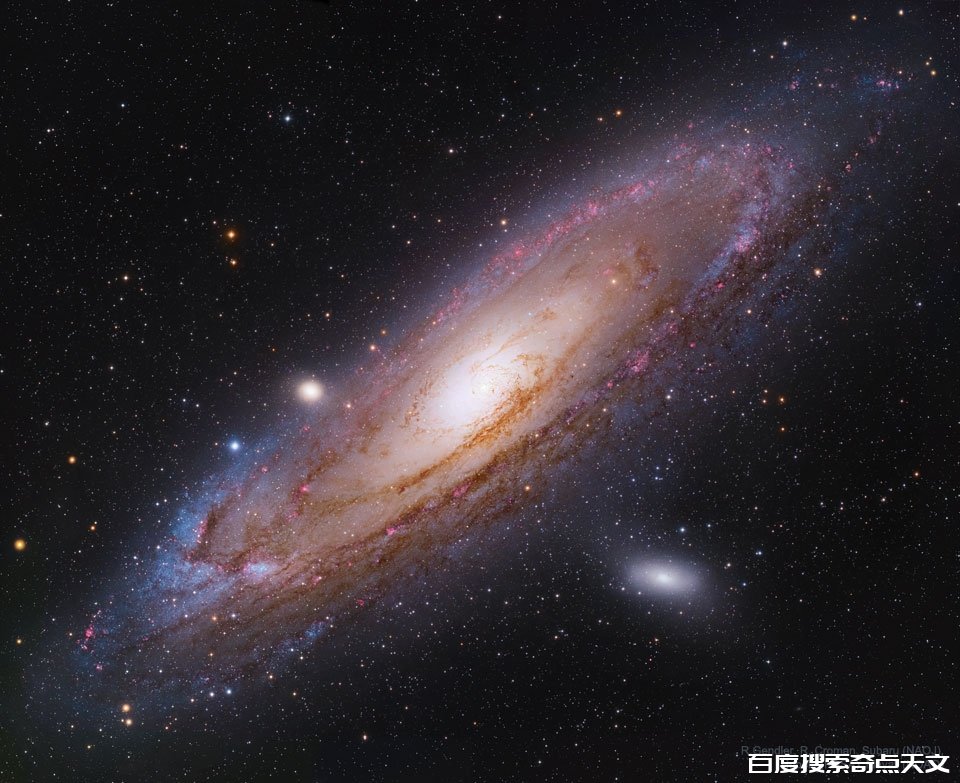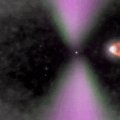
M31:仙女座星系

M31: The Andromeda Galaxy
Image Credit: Subaru (NAOJ), Hubble (NASA/ESA), Mayall (NSF);
Processing & Copyright: R. Gendler & R. Croman
Explanation: The most distant object easily visible to the unaided eye is M31, the great Andromeda Galaxy. Even at some two and a half million light-years distant, this immense spiral galaxy — spanning over 200,000 light years — is visible, although as a faint, nebulous cloud in the constellation Andromeda. In contrast, a bright yellow nucleus, dark winding dust lanes, and expansive spiral arms dotted with blue star clusters and red nebulae, are recorded in this stunning telescopic image which combines data from orbiting Hubble with ground-based images from Subaru and Mayall. In only about 5 billion years, the Andromeda galaxy may be even easier to see — as it will likely span the entire night sky — just before it merges with our Milky Way Galaxy.
Tomorrow’s picture: open space
M31:仙女座星系
影像提供: Subaru (NAOJ), Hubble (NASA/ESA), Mayall (NSF);
影像处理与版权: R. Gendler & R. Croman
说明: 人类肉眼能轻易见到的最远天体是M31 (仙女座星系)。这个约250万光年远、跨幅超过200,000光年的庞大螺旋星系,在我们肉眼里,只是仙女座内一团并不起眼的黯淡弥漫云气。然而在这幅作为对比、整合了在轨哈勃望远镜与地面斯巴鲁及梅奥尔望远镜照片的精采影像里,这个邻近大星系明亮的泛黄核心、蜿蜒黝黑的尘埃带、及上头散布着泛蓝星团和泛红星云的广袤螺旋臂皆历历在目。大约再过50亿年,仙女大星系或许会变得更轻易可见,届时它在与我们的银河系合而为一之前,很可能会横亘整个夜空。
明日的图片: open space


